Instruction
Study: Center of Pressure movements need to change for different shots

Every wonder why one golfer is so proficient with his driver, but cringes when has has a wedge in his hands? Another golfer may be an excellent short iron player, but he is scared stiff of his long irons. Is it all just skill level and practice?
For years, I’ve been obsessed with finding ways to build the tools I need so that I could validate the notion that “one optimal swing type for a complete range of golfers’ needs” just doesn’t make sense.
It seems to me that teaching just one swing type without showing a golfer how to adjust for each particular shot is very much like trying to select one car to suit all the family’s needs. Basically, it’s just a series of comprised decisions that invariably never meets the total needs.
Since 2010. I’ve been building digital tools that will finally inspire us to validate that “there is an optimal swing pattern for each and every type of golf shot and all golfers will need to acquire several of them to have a complete game.“
Working with a medical company called Patientech Vista in Winnipeg, Manitoba, Canada, our team developed a golf pressure mat called BodiTrak that measures center of pressure.
By measuring the average position of a golfer’s vertical forces while in either in a “static” (set up in the address positions for various shots) and or “dynamic” position to capture complete swing data using sound as the trigger for determining impact and the web cam off your laptop for integrated video, we now can now bring center of pressure, or C.O.P. golf pressure mapping to the masses.
What you will see below are actual screen shots of the BodiTrak user interface.
A bit about BodiTrak: BodiTrak is a highly portable golf pressure mat that can be rolled up into a trim carrying case, weighs approximately 8 pounds and can be used both indoors and outdoors on any type of lie, putting, chipping, downhill and even side hill lies and sells for under $2,000.
Dr. Sasho MacKenzie, a well-known golf biomechanist from St. Francis Xavier University in Antigonish, Nova Scotia, Canada and I did the initial validation of the BodiTrak Golf Pressure Mat as compared to an AMTI Force Plates that many of the top researchers in golf use. The results were positive and the trace patterns near match up in near identical fashions.
Much of the information we all can now capture has never been seen before, in particular the C.O.P. traces from the unusual lies, downhill lies, sidehill lies and so forth.
Pressure mapping itself is not a new topic. All successful golfers innately understand the significance of proper weight and balance issues. But until now, the lack of portability and high costs of force plates have restricted validating weight and balance issues. Most of the data collected to date has been restricted to but an elite group of researchers, biomechanists and advanced golf academies.
Recently, an article was written comparing the brake effect of a baseball player to golf, and this was just the encouragement that I needed to reach out and submit this article. It turns out that this brake effect is exactly what we refer to in our pressure mapping system as the power trace.
While conducting an early spring symposium at Holland Golf College in Prince Edward Island earlier this year, I ran through all 43 golf students on the golf pressure mapping device. The results were obvious and very interesting, and I’d like to share them here with you.
Hockey is Canada’s national sport, and it’s easy to understand that so many of the Holland College group I was testing were well versed in slapshots. I was very curious to see if many of these young golfers that had the power trace actually knew what they were doing to create the power. Amazingly, most did!
It turns out that in hockey (just it as in baseball), the most powerful slapshots are produced when the front foot is used as a brake, slowing down the forward momentum providing resistance to hit against. This is a well-established fact among hockey players and makes total sense. Otherwise, you would be sliding forward and very little power would be generated in a slap shot if this technique wasn’t used.
The power trace illustrated below indicates that the C.O.P. DOT (white dot) moves hard to the front foot even before the golfer completes his backswing. I refer to this as the “resting” position. Next, the vertical forces in the C.O.P. trace reverse toward the back foot just prior to impact, allowing the golfer to create the resistance that generates his impressive power.
When polling the students, I asked this distinguished group of power hitters to describe their short iron and wedge play. Most indicated that their irons was not their strong suit. This made perfect sense. For if you use this C.O.P. power trace for all your shots, you are effectively pulling up prior to impact, which may not be ideal for short iron play.
Below is a great example of the C.O.P. power trace collected at my Holland College symposium. By the way, if you slow down the new D.N.A. golf shoe add by FootJoy, you’ll see the same C.O.P. Trace they are showing on their pressure map.
A Holland College player selected by his peers as the best iron player. The same player as above C.O.P. iron trace.
C.O.P. Linear Trace: Irons
When these power trace hitters were questioned about their personal iron play, I also asked all of their power trace peers who was the best iron player in their group.
The same golfer, Ben, who used the power trace with his driver, demonstrated a completely different C.O.P. trace with his irons!
Through thousands of hours testing with the BodiTrak Golf Pressure Mapping device, I’ve come to call this C.O.P. trace “linear,” as it illustrates the a golfer’s transfer of a weight in very simplistic manner: straight back and straight through.
In actual field testing, I’ve found that this linear C.O.P. trace is used by very accurate golfers and a very reliable C.O.P. trace of a golfer with strong short iron performance, where power generation is not a crucial part of the optimal overall result.
Of all the various C.O.P. traces, the linear trace is not the most powerful, but it does seem to represent the most accurate C.O.P. trace for short iron play.
I’ve posted the power trace at on Youtube for your greater scrutiny.
[youtube id=”kdOYrn9ckgo” width=”620″ height=”360″]
While C.O.P. analysis is purely research at its infancy, it’s very clear that the ideal C.O.P. trace for optimal distance is not the one that is to be used for optimal control. Each set of clubs, be that driver, fairway woods, irons and the likes, all will have their own optimal C.O.P. trace patterns. That is not likely a revelation to most.
Finally, a solution to understanding that one swing for all shots is not an optimal solution. This science shows that predictable traces serve each particular shot required and help golfers quantify feel. Unfortunately, as I learn more and more about C.O.P. golf pressure mapping, my lifetime obsession to prove my notion has not subsided, rather it has grown.
Instruction
The Wedge Guy: Beating the yips into submission

There may be no more painful affliction in golf than the “yips” – those uncontrollable and maddening little nervous twitches that prevent you from making a decent stroke on short putts. If you’ve never had them, consider yourself very fortunate (or possibly just very young). But I can assure you that when your most treacherous and feared golf shot is not the 195 yard approach over water with a quartering headwind…not the extra tight fairway with water left and sand right…not the soft bunker shot to a downhill pin with water on the other side…No, when your most feared shot is the remaining 2- 4-foot putt after hitting a great approach, recovery or lag putt, it makes the game almost painful.
And I’ve been fighting the yips (again) for a while now. It’s a recurring nightmare that has haunted me most of my adult life. I even had the yips when I was in my 20s, but I’ve beat them into submission off and on most of my adult life. But just recently, that nasty virus came to life once again. My lag putting has been very good, but when I get over one of those “you should make this” length putts, the entire nervous system seems to go haywire. I make great practice strokes, and then the most pitiful short-stroke or jab at the ball you can imagine. Sheesh.
But I’m a traditionalist, and do not look toward the long putter, belly putter, cross-hand, claw or other variation as the solution. My approach is to beat those damn yips into submission some other way. Here’s what I’m doing that is working pretty well, and I offer it to all of you who might have a similar affliction on the greens.
When you are over a short putt, forget the practice strokes…you want your natural eye-hand coordination to be unhindered by mechanics. Address your putt and take a good look at the hole, and back to the putter to ensure good alignment. Lighten your right hand grip on the putter and make sure that only the fingertips are in contact with the grip, to prevent you from getting to tight.
Then, take a long, long look at the hole to fill your entire mind and senses with the target. When you bring your head/eyes back to the ball, try to make a smooth, immediate move right into your backstroke — not even a second pause — and then let your hands and putter track right back together right back to where you were looking — the HOLE! Seeing the putter make contact with the ball, preferably even the forward edge of the ball – the side near the hole.
For me, this is working, but I am asking all of you to chime in with your own “home remedies” for the most aggravating and senseless of all golf maladies. It never hurts to have more to fall back on!
Instruction
Looking for a good golf instructor? Use this checklist

Over the last couple of decades, golf has become much more science-based. We measure swing speed, smash factor, angle of attack, strokes gained, and many other metrics that can really help golfers improve. But I often wonder if the advancement of golf’s “hard” sciences comes at the expense of the “soft” sciences.
Take, for example, golf instruction. Good golf instruction requires understanding swing mechanics and ball flight. But let’s take that as a given for PGA instructors. The other factors that make an instructor effective can be evaluated by social science, rather than launch monitors.
If you are a recreational golfer looking for a golf instructor, here are my top three points to consider.
1. Cultural mindset
What is “cultural mindset? To social scientists, it means whether a culture of genius or a culture of learning exists. In a golf instruction context, that may mean whether the teacher communicates a message that golf ability is something innate (you either have it or you don’t), or whether golf ability is something that can be learned. You want the latter!
It may sound obvious to suggest that you find a golf instructor who thinks you can improve, but my research suggests that it isn’t a given. In a large sample study of golf instructors, I found that when it came to recreational golfers, there was a wide range of belief systems. Some instructors strongly believed recreational golfers could improve through lessons. while others strongly believed they could not. And those beliefs manifested in the instructor’s feedback given to a student and the culture created for players.
2. Coping and self-modeling can beat role-modeling
Swing analysis technology is often preloaded with swings of PGA and LPGA Tour players. The swings of elite players are intended to be used for comparative purposes with golfers taking lessons. What social science tells us is that for novice and non-expert golfers, comparing swings to tour professionals can have the opposite effect of that intended. If you fit into the novice or non-expert category of golfer, you will learn more and be more motivated to change if you see yourself making a ‘better’ swing (self-modeling) or seeing your swing compared to a similar other (a coping model). Stay away from instructors who want to compare your swing with that of a tour player.
3. Learning theory basics
It is not a sexy selling point, but learning is a process, and that process is incremental – particularly for recreational adult players. Social science helps us understand this element of golf instruction. A good instructor will take learning slowly. He or she will give you just about enough information that challenges you, but is still manageable. The artful instructor will take time to decide what that one or two learning points are before jumping in to make full-scale swing changes. If the instructor moves too fast, you will probably leave the lesson with an arm’s length of swing thoughts and not really know which to focus on.
As an instructor, I develop a priority list of changes I want to make in a player’s technique. We then patiently and gradually work through that list. Beware of instructors who give you more than you can chew.
So if you are in the market for golf instruction, I encourage you to look beyond the X’s and O’s to find the right match!
Instruction
What Lottie Woad’s stunning debut win teaches every golfer

Most pros take months, even years, to win their first tournament. Lottie Woad needed exactly four days.
The 21-year-old from Surrey shot 21-under 267 at Dundonald Links to win the ISPS Handa Women’s Scottish Open by three shots — in her very first event as a professional. She’s only the third player in LPGA history to accomplish this feat, joining Rose Zhang (2023) and Beverly Hanson (1951).
But here’s what caught my attention as a coach: Woad didn’t win through miraculous putting or bombing 300-yard drives. She won through relentless precision and unshakeable composure. After watching her performance unfold, I’m convinced every golfer — from weekend warriors to scratch players — can steal pages from her playbook.
Precision Beats Power (And It’s Not Even Close)
Forget the driving contests. Woad proved that finding greens matters more than finding distance.
What Woad did:
• Hit it straight, hit it solid, give yourself chances
• Aimed for the fat parts of greens instead of chasing pins
• Let her putting do the talking after hitting safe targets
• As she said, “Everyone was chasing me today, and managed to maintain the lead and played really nicely down the stretch and hit a lot of good shots”
Why most golfers mess this up:
• They see a pin tucked behind a bunker and grab one more club to “go right at it”
• Distance becomes more important than accuracy
• They try to be heroic instead of smart
ACTION ITEM: For your next 10 rounds, aim for the center of every green regardless of pin position. Track your greens in regulation and watch your scores drop before your swing changes.
The Putter That Stayed Cool Under Fire
Woad started the final round two shots clear and immediately applied pressure with birdies at the 2nd and 3rd holes. When South Korea’s Hyo Joo Kim mounted a charge and reached 20-under with a birdie at the 14th, Woad didn’t panic.
How she responded to pressure:
• Fired back with consecutive birdies at the 13th and 14th
• Watched Kim stumble with back-to-back bogeys
• Capped it with her fifth birdie of the day at the par-5 18th
• Stayed patient when others pressed, pressed when others cracked
What amateurs do wrong:
• Get conservative when they should be aggressive
• Try to force magic when steady play would win
• Panic when someone else makes a move
ACTION ITEM: Practice your 3-6 foot putts for 15 minutes after every range session. Woad’s putting wasn’t spectacular—it was reliable. Make the putts you should make.
Course Management 101: Play Your Game, Not the Course’s Game
Woad admitted she couldn’t see many scoreboards during the final round, but it didn’t matter. She stuck to her game plan regardless of what others were doing.
Her mental approach:
• Focused on her process, not the competition
• Drew on past pressure situations (Augusta National Women’s Amateur win)
• As she said, “That was the biggest tournament I played in at the time and was kind of my big win. So definitely felt the pressure of it more there, and I felt like all those experiences helped me with this”
Her physical execution:
• 270-yard drives (nothing flashy)
• Methodical iron play
• Steady putting
• Everything effective, nothing spectacular
ACTION ITEM: Create a yardage book for your home course. Know your distances to every pin, every hazard, every landing area. Stick to your plan no matter what your playing partners are doing.
Mental Toughness Isn’t Born, It’s Built
The most impressive part of Woad’s win? She genuinely didn’t expect it: “I definitely wasn’t expecting to win my first event as a pro, but I knew I was playing well, and I was hoping to contend.”
Her winning mindset:
• Didn’t put winning pressure on herself
• Focused on playing well and contending
• Made winning a byproduct of a good process
• Built confidence through recent experiences:
- Won the Women’s Irish Open as an amateur
- Missed a playoff by one shot at the Evian Championship
- Each experience prepared her for the next
What this means for you:
• Stop trying to shoot career rounds every time you tee up
• Focus on executing your pre-shot routine
• Commit to every shot
• Stay present in the moment
ACTION ITEM: Before each round, set process goals instead of score goals. Example: “I will take three practice swings before every shot” or “I will pick a specific target for every shot.” Let your score be the result, not the focus.
The Real Lesson
Woad collected $300,000 for her first professional victory, but the real prize was proving that fundamentals still work at golf’s highest level. She didn’t reinvent the game — she simply executed the basics better than everyone else that week.
The fundamentals that won:
• Hit more fairways
• Find more greens
• Make the putts you should make
• Stay patient under pressure
That’s something every golfer can do, regardless of handicap. Lottie Woad just showed us it’s still the winning formula.
FINAL ACTION ITEM: Pick one of the four action items above and commit to it for the next month. Master one fundamental before moving to the next. That’s how champions are built.
PGA Professional Brendon Elliott is an award-winning coach and golf writer. You can check out his writing work and learn more about him by visiting BEAGOLFER.golf and OneMoreRollGolf.com. Also, check out “The Starter” on RG.org each Monday.
Editor’s note: Brendon shares his nearly 30 years of experience in the game with GolfWRX readers through his ongoing tip series. He looks forward to providing valuable insights and advice to help golfers improve their game. Stay tuned for more Tips!


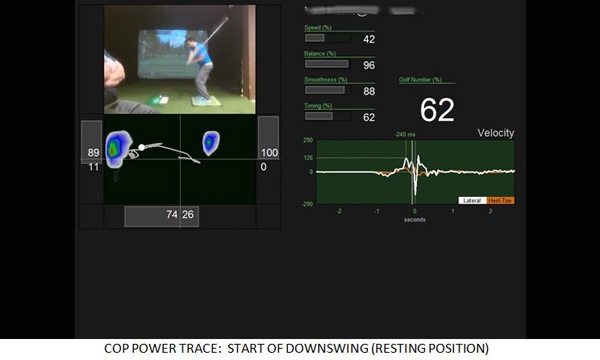
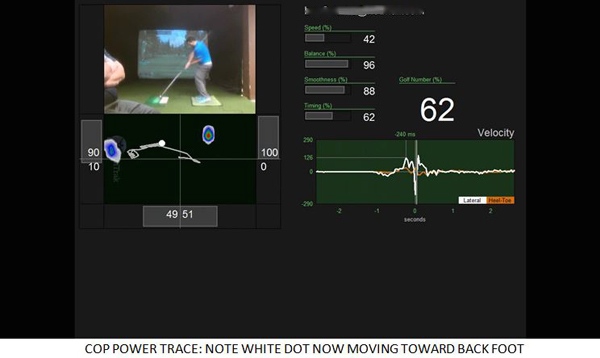
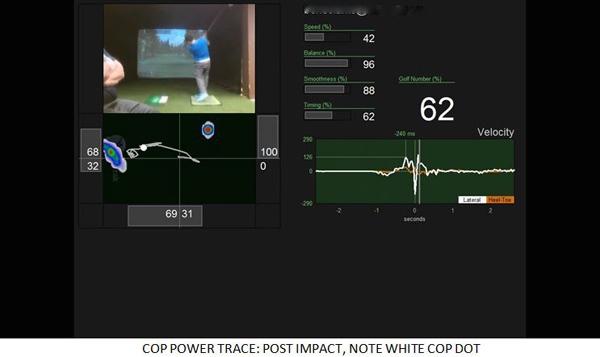
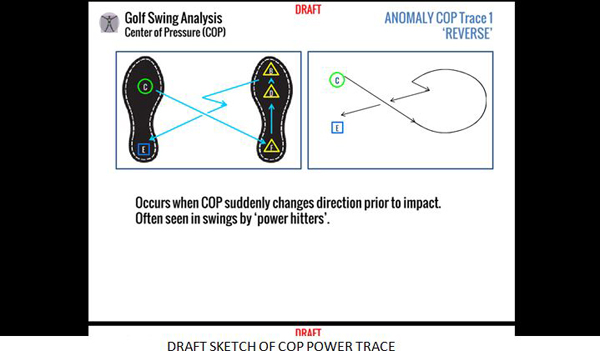
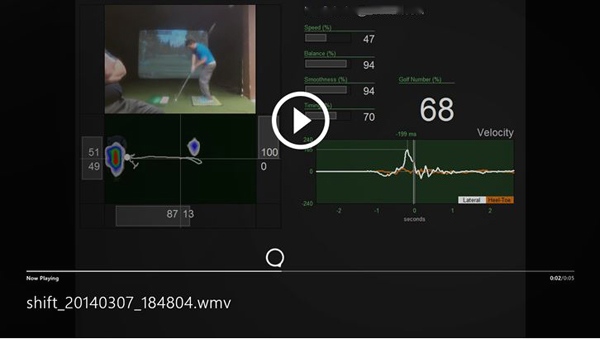












Pingback: BodiTrak Sports | Study: Center of Pressure movements need to change for different shots
Pingback: Study: Center of Pressure movements need to change for different shots | Golf Pressure Mapping
Pingback: Holland College golf students participate in applied research project | Holland College Blog
Per Liv
May 17, 2014 at 3:34 pm
Hi Terry,
I work with the BT mat and think it’s great.
Have you got some data from tour players you could share with me, or do you know where I can find such?
Thanks in advance
/Per
terry hashimoto
Jul 24, 2014 at 1:47 pm
We’ve just integrated into the Swing Catalyst Software and there is more a more tour data coming every day. But its all the same to the extent of that a top amateur.
Its very intriguing and interesting to see that the Linear Trace works best for accuracy and the Power Trace not so well for irons, and this is 100 % a correlation that is real.
AP
May 14, 2014 at 2:21 pm
The feet show a percentage right and percentage left which is a relative measure, not absolute. I the youtube swing video, you see the player’s driver swing causes his rear heal to lift well before impact, and soon after impact his front foot leaves the ground for a moment, spins out a bit, and then lands again for his finish position’s support. Is it possible that the backward movement of the dot is a function of this movement, and what COP is by definition?… which as I understand it is not the same as center of gravity.
What do you think the trace of someone that doesn’t pop up near, during or just after impact would look like? Players like Kenny Perry who keep their rear foot heel planted through impact will likely show a very different COP trace, right?
terry hashimoto
Jul 24, 2014 at 1:45 pm
My apologies for this terribly late response, but just as well because we’re learning more and more every day.
Center of Pressure is the average sum of all the vertical forces we measure on the mat.
It is a strict measurement of motion in 2 directions Side to Side and Front to Back.
J Sheehan
May 12, 2014 at 12:13 pm
Great article. I’ve also been intrigued by what you’re studying–that is–the movement of the C.O.P. throughout the swing and how it changes from club to club.
Interesting, I just read an article on GolfWRX by Bill Schmedes III (“The Difference Between Amateurs and Professionals is in the Ground”, April 28th). In the article he covers some of the same principles you’re studying but with one main difference. He indicated to me (in the comment section) that a golfers C.O.P. and weight transfer remain essentially the same from club to club and whether the ball is teed up or not.
Just from my own practical experience, I wanted to disagree but–hey– he’s got the data. Your findings seem to align with my premise while contradicting his. Care to comment?
terry hashimoto
May 12, 2014 at 8:05 pm
Hi there J Sheehan and thanks so much for the positive comment. I actually read Bill Schmedes article and what I took from it was that COP Traces don’t differentiate from your method of instruction – be that Stack and Tilt and or McClean and or Annika and or anyones methods.
We know with certainty that 1 trace for all swings is not optimal.
All instructors know that and I’m glad you feel the same. But I thought Bills article more eluded to the fact that COP Traces tell the truth regardless of what method the golfer instructs – Which I agree with.
Hope this is of some value
Terry Hashimoto
Bill Schmedes III
May 12, 2014 at 9:25 pm
Well put Terry and yes that’s what I was attempting to convey. Great article also!
J Sheehan
May 13, 2014 at 2:57 am
Very valuable and thank you. Both you and Mr. Schmedes are doing cool work. Hope to read more about what you find in the future.